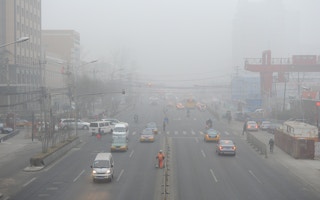Scientists from the Asia-Pacific have pooled resources to create a database on air pollution, which affects the health of millions of people living in the region.
Called the Asia Pacific Aerosol Database (A-PAD), the project collected data samples over ten years that can now provide exact information in improving environmental policies, according to the International Atomic Energy Agency (IAEA), the intergovernmental body which guided the project.
Member states from the Asia-Pacific signed a regional cooperative agreement in 1996 under the auspices of the IAEA to address the problem of worsening air quality.
“A large number of people in Asia, particularly those living in megacities, are exposed to high levels of air particulate matter from people-made sources. Small-city residents too are at risk because industrial activities and coal-fired power plants can cause massive health and environmental problems,” says Andreas Karydas, a physicist at IAEA.
Over the past ten years, the IAEA trained scientists from Australia, Bangladesh, China, India, Indonesia, Malaysia, Mongolia, Myanmar, New Zealand, Pakistan, Philippines, Republic of Korea, Sri Lanka and Vietnam to measure air pollution using nuclear techniques. They used equipment from the IAEA to collect, analyse, and classify airborne particulate matters.
“The capabilities they developed [from the training] have supported air quality improvement. For example, scientists in Indonesia have identified lead pollution sources in Surabaya and Serpong,” says Karydas.
Policymakers in China, Malaysia, Indonesia, Mongolia and the Philippines have also used the database to revise air quality regulations in their countries.
Nuclear techniques used in the project include particle-induced X-ray emission (PIXE), a method that analyses particulate matters by exposing air samples to an ion beam. Through this method, the cause of air pollution can be identified, whether it is from motor vehicles, forest fires, volcanic activity, or industry. The data can also be combined with meteorological data to identify the cause of pollution.
Muhayatun Santoso, a senior scientist at Indonesia’s Nuclear and Atomic Agency (BATAN), says nuclear techniques would really be helpful in guiding environmental policies in the country. Aside from forest fires, air pollution in Indonesian cities is a serious problem.
“If we are able to detect the source of pollution using these techniques, the government can improve environmental regulations,” she notes.
Santoso and her team in BATAN have been collaborating with the Ministry of Forestry and Environmental Affairs in measuring air pollution in Indonesian cities.

















